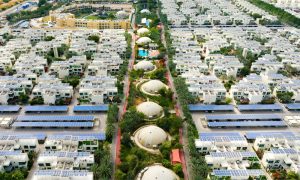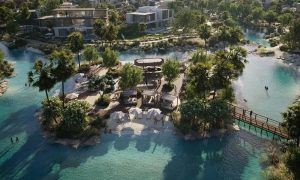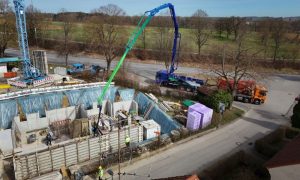GAJ says work on Arcadia’s secondary school focuses on sustainable building methods
GAJ is responsible for the architecture, interior design and MEP of the project which is expected to be completed by April 2020

Arcadia’s secondary school was designed and built with environmental sustainability firmly in mind according to Godwin Austen Johnson’s (GAJ) Jason Burnside. In an exclusive interview with MECN, Burnside, partner at GAJ, said that they are responsible for the architecture, interior design and MEP of the project and is in the process of finalising the LEED certification for the school.
Burnside said that the school was keen to create a flexible and working environment that fosters social interaction. An example of this is the installation of two teaching walls as opposed to the traditional single wall. “This created a blended learning environment that incorporated innovative elements within traditional teaching spaces.”
The plot area of Arcadia’s secondary campus is 13,095 sqm. and the built-up area is 24,593 sqm. According to Burnside, MEP work is around 75 per cent completed while the building is around 80 per cent completed; the project is expected to be completed by April 2020.
He stated that the focal point of GAJ’s work on the school is sustainable building methods. “For instance, through careful consideration of the external building envelope design and specification we have selected materials with high thermal properties to help insulate the building more efficiently.”
“The ventilation system was a key area and we have installed CO2 sensors in the classrooms to monitor the air quality. Ventilation systems controlled by demand are the most effective at maintaining good levels of indoor air quality, without using excessive amounts of energy and in this case the air-handling unit is controlled by CO2 monitoring with every classroom equipped with CO2 sensors,” he explained.
Burnside noted that they have also used high performance Turbocor chillers which use advanced technology to deliver high efficiency and substantial energy savings.
Another focus of the project was lighting, said Burnside. “Lighting is a critical element of the learning environment and it was important to get this right for student comfort and to meet energy efficiency demands. We are the first school to use the LED version of a lighting solution developed by Whitecroft Lighting specifically for education,” he pointed out, adding that this combined with absence detection lighting controls ensured that the school’s lighting requirements are met in a cost-effective and energy conscious way.
Moreover, Burnside added that they wanted to ensure brand consistency and a design approach that supported the ethos and visual identity of Arcadia. It was an added asset that GAJ was also responsible for Arcadia’s preparatory school, which is just adjacent to the under-construction secondary school, and has a LEED certification.
“This will help with the transition of students from primary to secondary education and in building confidence for the students about moving to the next stage of their education. We understand and value the opportunity to create unique buildings for school operators and each one we deliver is tailored to the specific requirements and brand identity of the school,” concluded Burnside.























